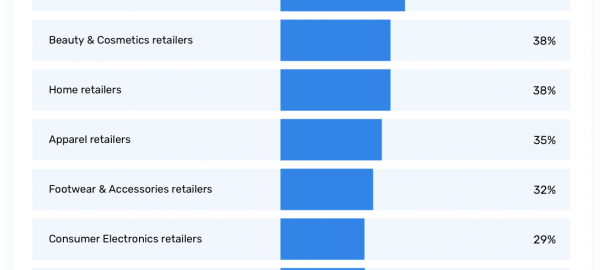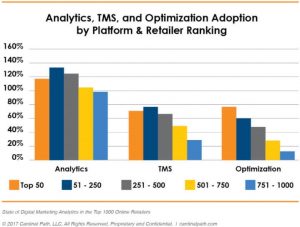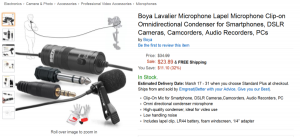Cart abandonment is a huge issue in ecommerce. So cart abandonment emails are often a top revenue generator. And discounts and offers within those emails are proven tactics for increasing conversions.
All standard wisdom. But we wanted to see how ecommerce brands deployed their offers. Are “best practices” for offers prevailing? Which strategies are brands using—or neglecting?
Here’s what we did:
- We chose 1,000 direct-to-consumer ecommerce brands.
- We abandoned 1,000 carts.
- 68% of those brands sent cart abandonment emails.
- We received a total of 1,233 individual cart abandonment emails.
We assessed these brands’ offers and compiled the data. Here’s what we found, and what we think about it.
1. Most brands don’t include offers in abandoned cart emails.
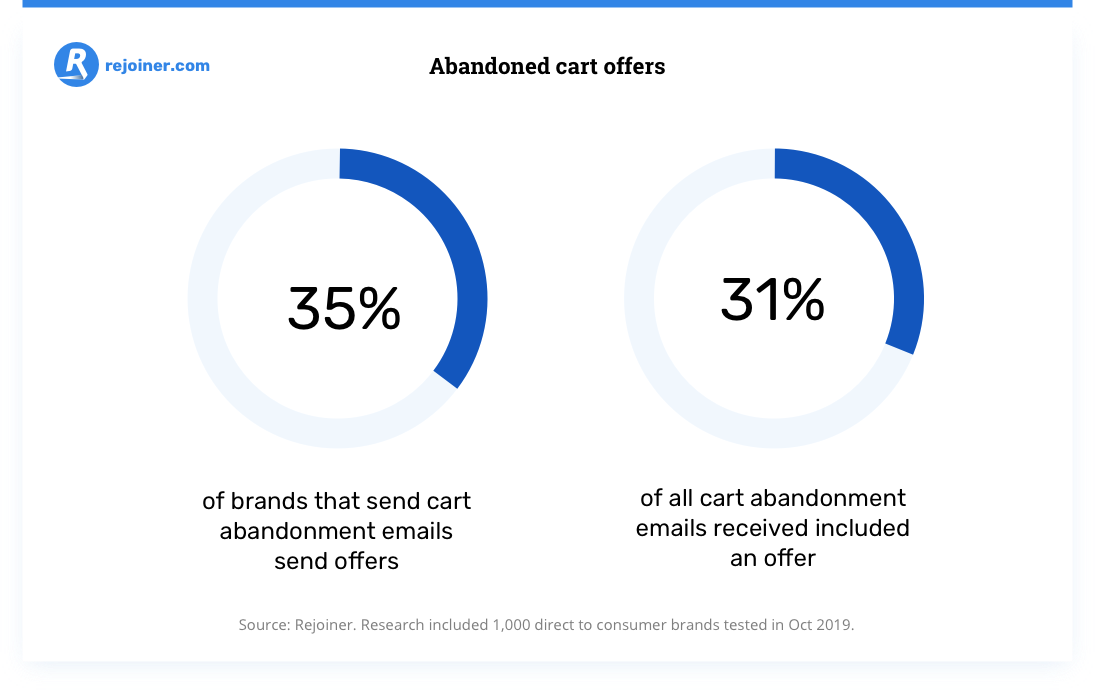
Nearly two-thirds of ecommerce brands don’t include offers in their abandoned cart emails. Why?
Many customers will return and complete their purchase without the incentive of an offer. So, simply sending an abandoned cart email (without an offer) may increase your revenue. Some companies may have found that fewer full-price cart recoveries generated more revenue than a higher volume of discounted sales.
It’s also possible that brands that do send abandoned cart emails have measured their performance only with or without a generic email, never optimizing the abandoned cart emails themselves—a pretty limited approach to “testing.”
Either way, you should run your own tests and find out if offers are the most profitable way to go. If including an offer reliably increases conversions, you can always tailor your offer to fit your profit margin and maximize ROI.
2. Companies backload offers in abandoned cart email series.
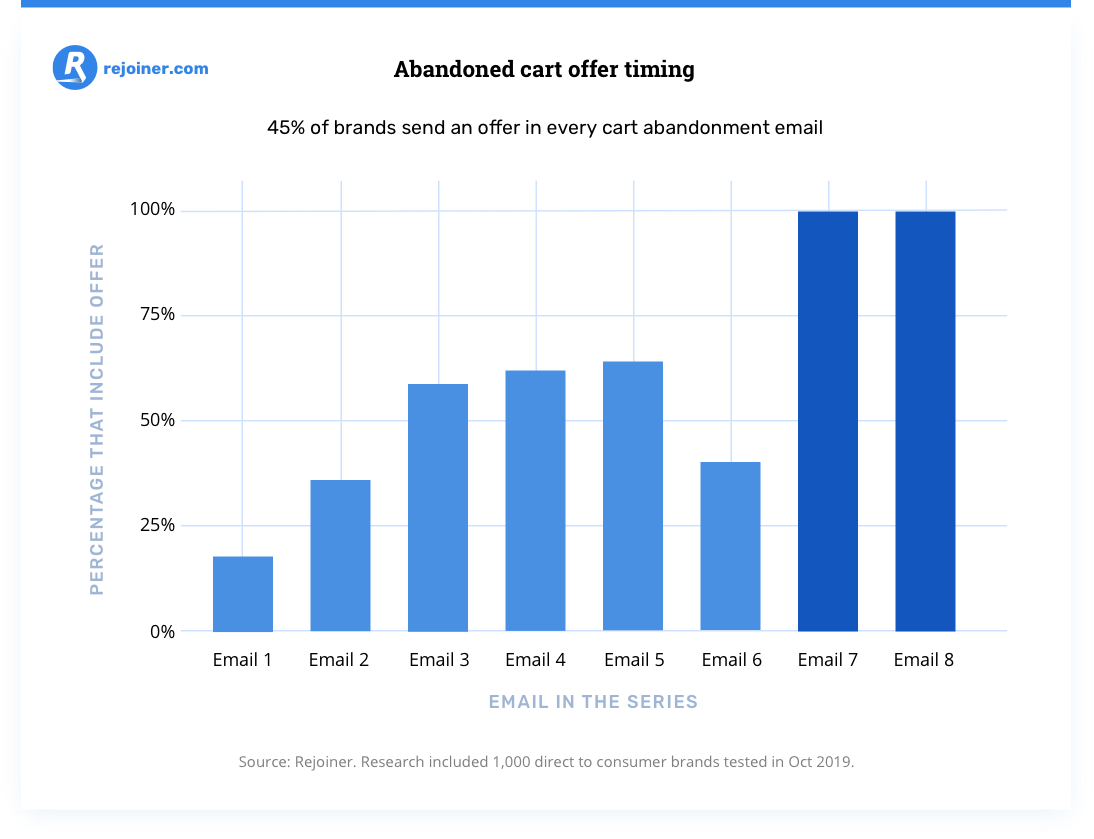
The general trend toward using offers as you get deeper into the cart abandonment series reflects companies’ belief (or, hopefully, data) that many of the “easy” recoveries will occur without an offer. Some customers need only a reminder, not a discount.
The later emails target the most stubborn cart abandoners, operating under the logic that an incentive is necessary to get the sale. If you send a reminder email without an offer as your first cart abandonment email, you save your discounts for customers who need the incentive.
The nearly 50-50 split between brands that do or don’t send an offer in every cart abandonment email is skewed lower by the first email, for which only 18% of companies include an offer.
3. Some 80% of companies that do send an offer send it in the first two emails.
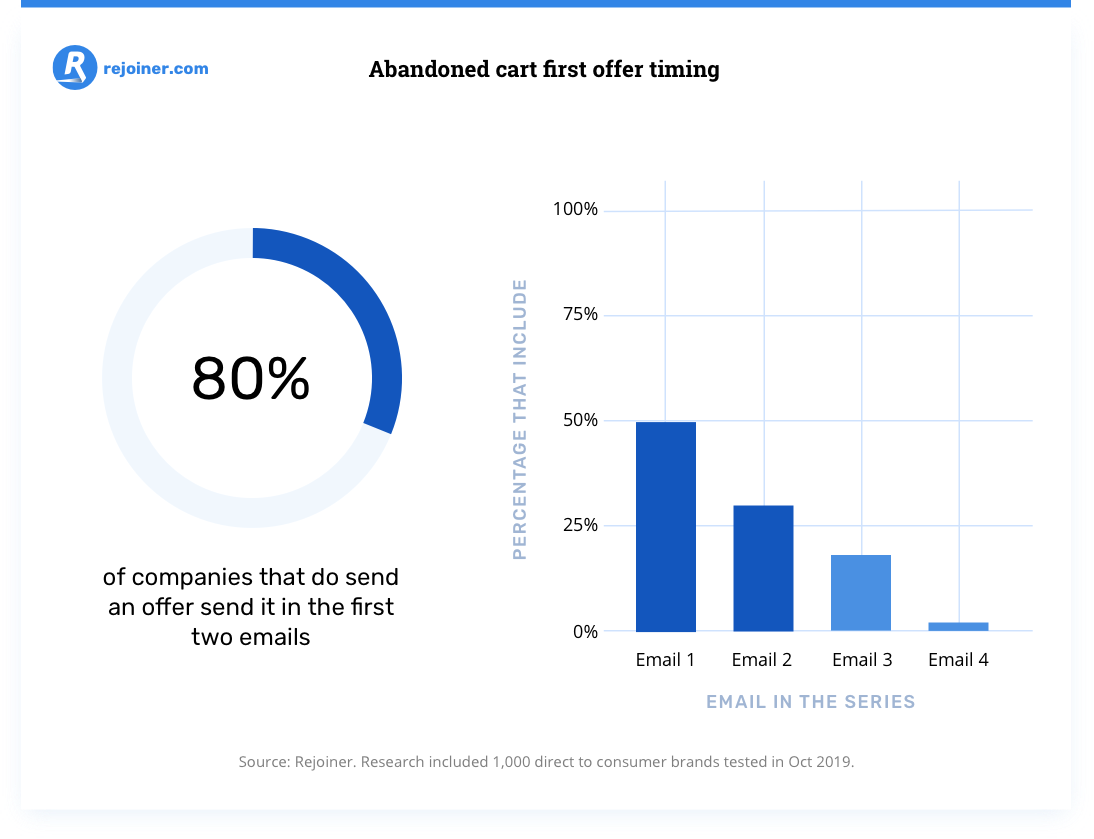
When should you send your first offer? There are a bunch of options, even if you decide that you’re definitely not sending an offer in the first email.
While only 48% of brands send their first offer in the second or third email, these emails are often the best time to introduce your offer. Typically, your second and third abandoned cart emails generate most of your abandoned cart revenue. (But, of course, you have to test it for yourself.)
The low-hanging fruit—cart abandoners who don’t need any offer—can be the focus of your first email; let the second or third introduce an incentive.
4. Hardly anyone improves their offer during the sequence.
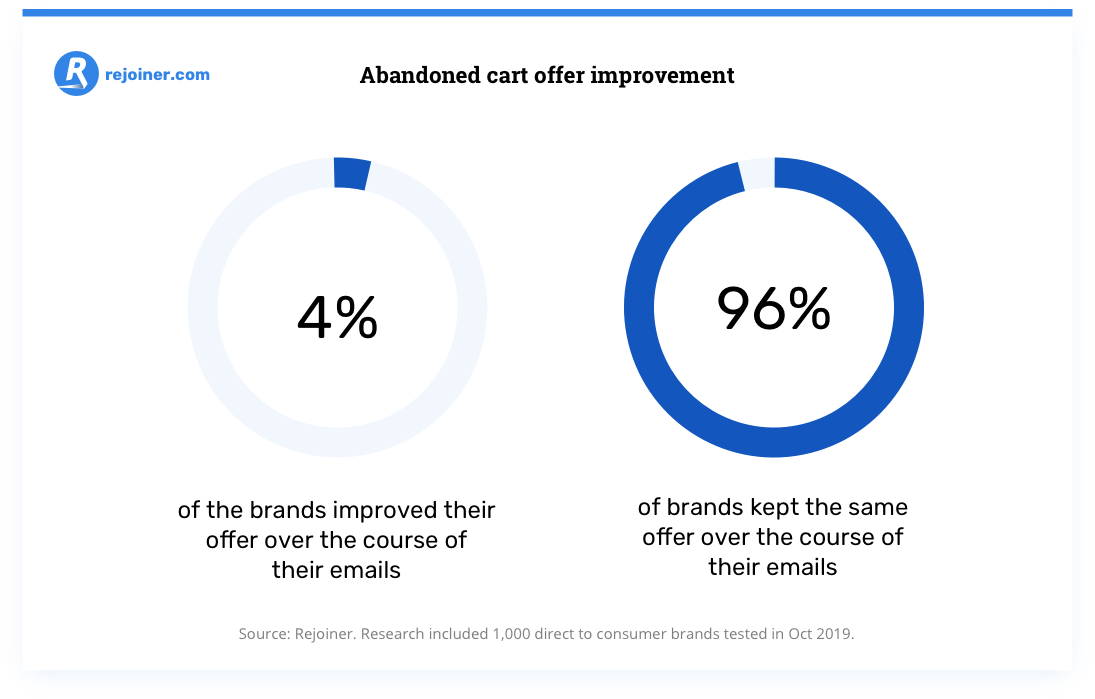
Escalating your offer is definitely something you can test. However, testing with improved offers should be low on your priority list. Based on our data, escalating offers seem to bring a marginal ROI.
One theory: Cart abandoners are high-purchase-intent customers. That purchase intent decreases over time. So, it’s best to hit cart abandoners with your best offer quickly, when they’re most likely to convert.
And if you lead with your best offer, there’s no room—and no need—to increase it.
5. Nearly 90% of brands that send an offer do so only once or twice.
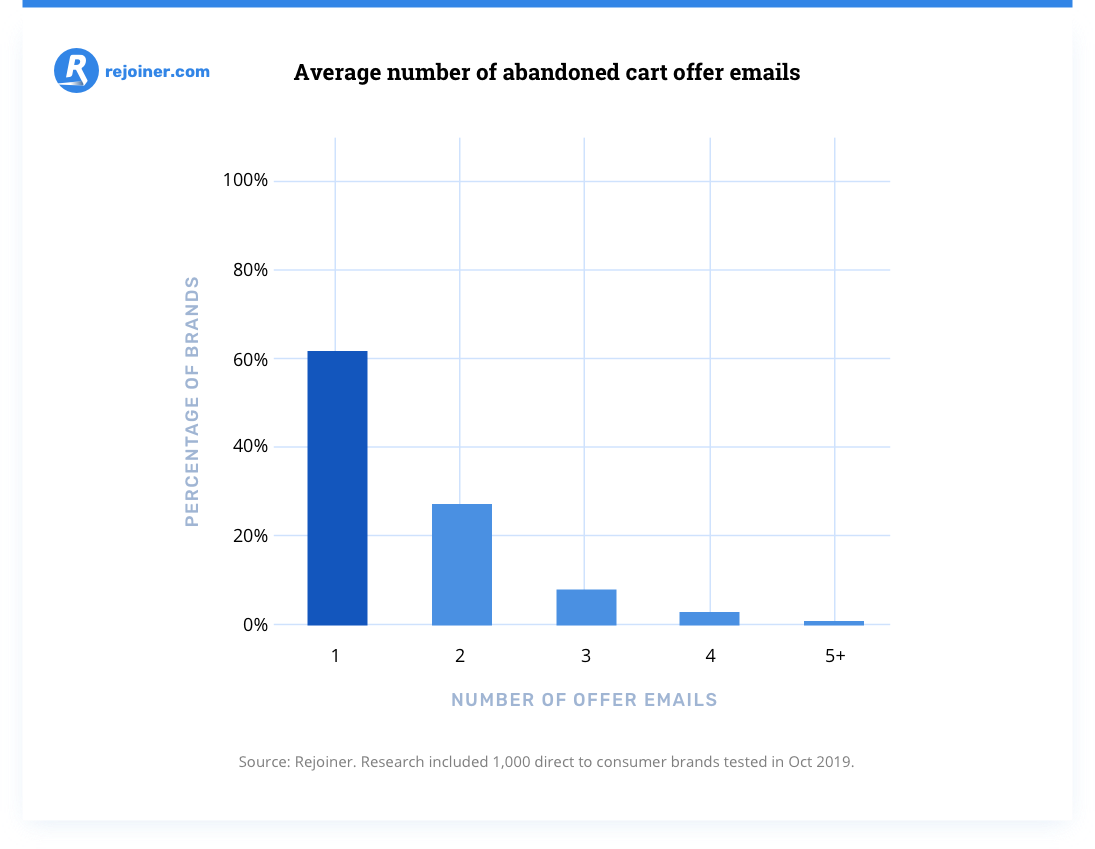
Sending only one offer email likely misses some conversion opportunities—though that’s what most brands do. Even if you don’t improve your offer, sending it more than once means that more cart abandoners will see it.
Subsequent emails also allow you to layer in other motivators. For example, you can structure your offer emails this way:
- First email with no offer.
- Initial offer email.
- Second offer email + scarcity (e.g., limited stock).
- Final offer email + scarcity (e.g., limited stock) + urgency (e.g., offer expires).
That’s just one option. There are many more ways to ratchet up the conversion power of your abandoned cart emails. But sending only one offer email forfeits the opportunity to test these additional tactics.
6. Brands are split on whether to include the offer in the subject line.
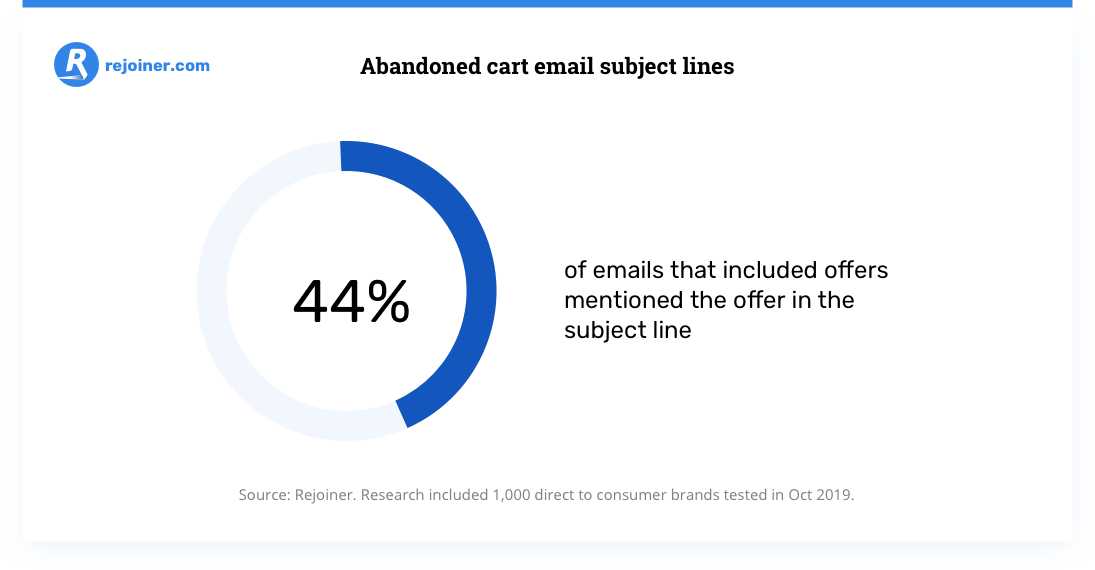
The fact that most emails with offers don’t mention the offer in the subject line is astounding.
If there’s an offer in your email, getting that offer is the primary benefit of opening the email. A failure to mention the offer will most likely lower open rates, and, therefore, lower conversion rates. Customers aren’t motivated by offers they don’t know about.
This is especially true if you don’t send an offer in the first email. If, for the second email with the offer, the subject line doesn’t mention it, your offer email looks pretty much the same as your reminder email—there’s no additional incentive to open it.
Now, you don’t have to say exactly what the offer is in the subject line. It’s good to evoke some curiosity (one of the strongest human motivators). But teasing an offer in the subject line may work well.
7. Offers are rarely linked to the call to action.
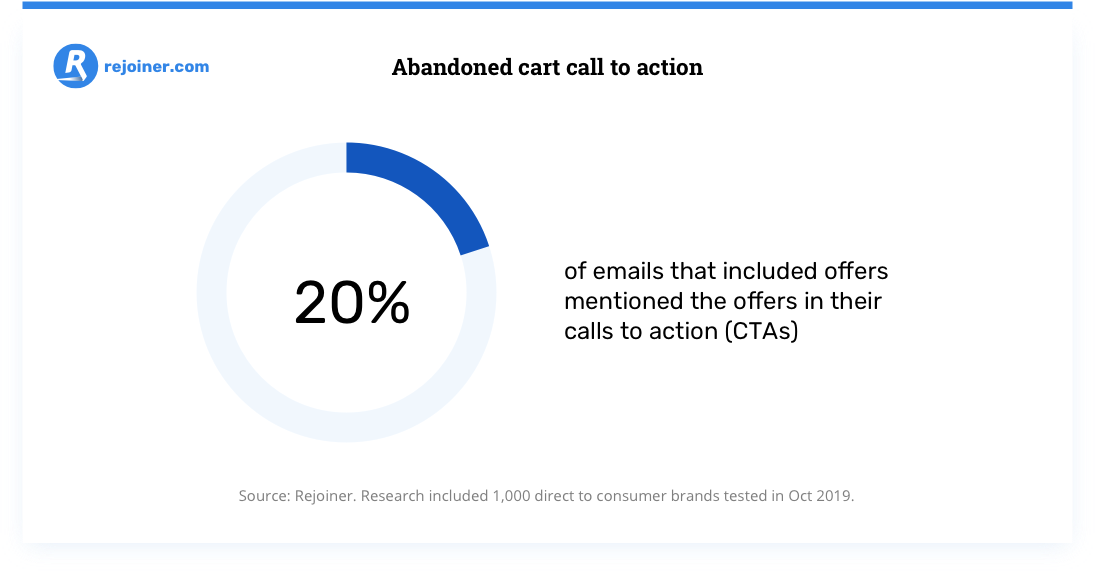
Using a CTA that reinforces your offer is just good direct response copywriting. We suspect that the low percentage here is because some companies haven’t tested their CTAs.
Or, it was too difficult to mention the offer and be specific about what they needed the customer to do. (Though a good copywriter can usually do both with just a few words.)
Streamline your checkout process to make it easier to craft a simple CTA that’s specific and makes the most of your offer.
8. Most offers are percentage discounts of 10–20%.
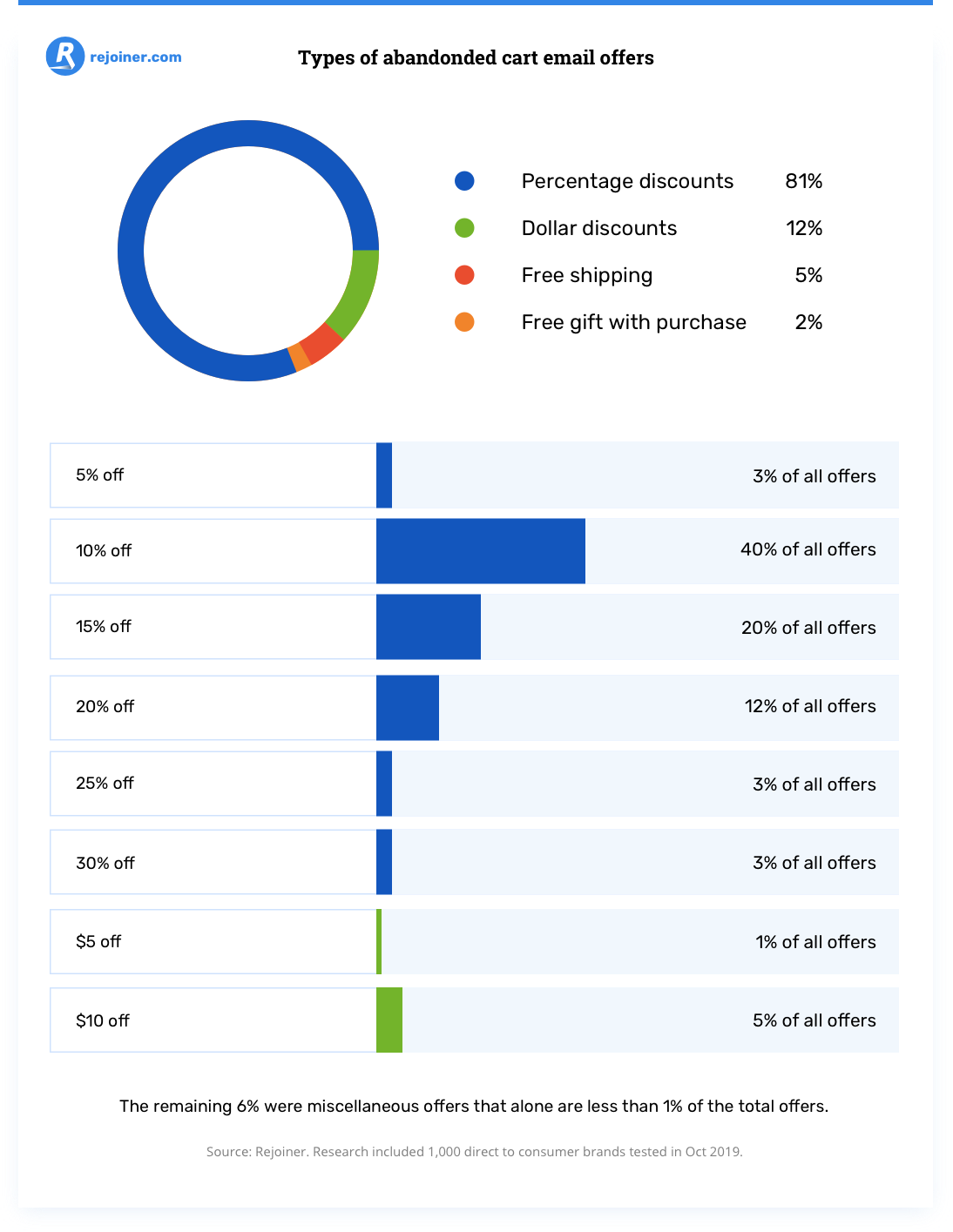
Discounts depend on how much the brand can afford. However, there are ways to optimize your discount for conversions and profit margin.
Most of the time, bigger numbers get more conversions. A “10% discount” looks better than “$ 5 off,” even if 10% works out to be $ 5 (or less). On the other hand, $ 5 is perceived as a better discount than 3%, even if 3% would be worth more.
In short, the perceived value of the discount is higher if the number is higher, regardless of whether it’s a percentage or a raw dollar amount.
That’s why we have things like the Rule of 100, which is just a cleverly branded method for quickly determining if a percentage or dollar discount will yield a higher number. (Percentage discounts tend to perform better for items under $ 100 because a profitable dollar discount is usually a lower number than a profitable percentage off.)
The data follows this logic. Companies often can’t afford 25% or 30% off. So few offer it. On the other end, 5% likely offers less real saving than a “$ 5 off” discount. Therefore, most companies settle in the 10–20% range because those seem like generous discount numbers.
Once you’ve calculated how much of a discount you can offer without giving away all your margin, do some additional arithmetic to work out the percentage off, on average. Use the bigger number. If your best discount is $ 10, but that works out to be just 5%, offer a $ 10 discount.
9. Static codes are the easiest way to implement offers.
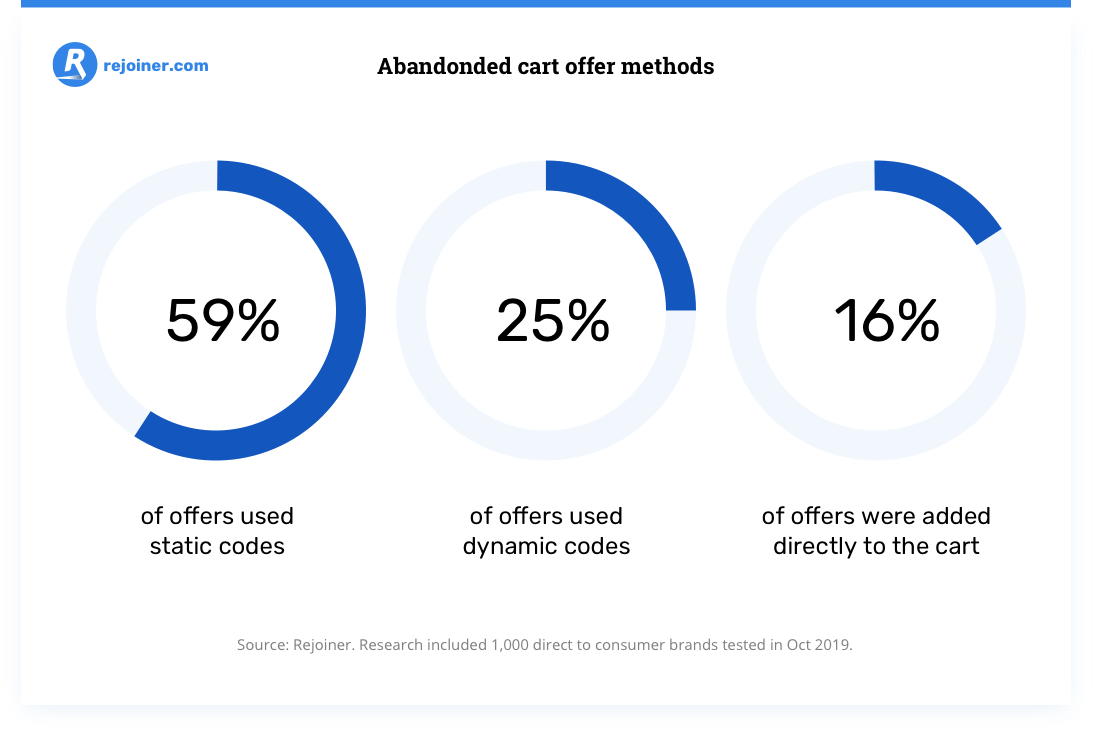
The trend here is determined by one thing: Static discount codes are easier to implement. But they’re not the best way to offer discounts.
Dynamic discount codes are better. They can be used only once—customers can’t share or leak them. Dynamic codes are also customizable. That might seem unimportant, but a customizable code lets you generate any code for any customer, so you can test different code formats to discover which convert best.
Sometimes, randomly generated codes convert better than clever vanity codes because the customer feels that the random code is more exclusive.
Adding the discount directly to the cart—something only 1 in 6 companies do—is the most convenient for the customer. But it’s the most difficult for businesses to implement, which is why it’s so rare.
10. Travel sites are using abandoned cart email offers more than anyone else.
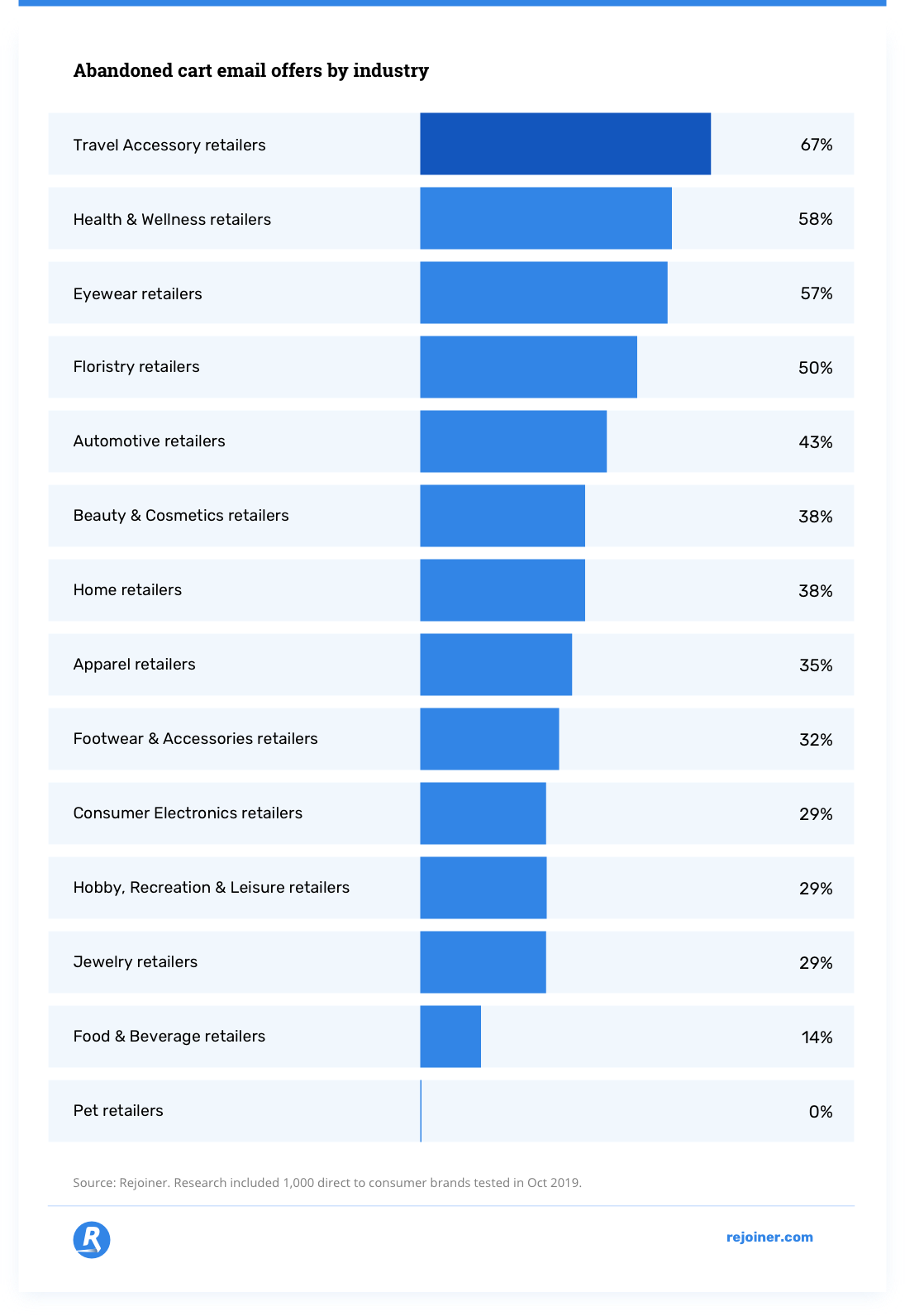 Note: Six “Pet retailers” were included in the study.
Note: Six “Pet retailers” were included in the study.
These stats vary widely, in part, because some industries don’t have the profit margin to rely on offers.
However, if you’re in an industry that typically doesn’t employ offers, it could be a good opportunity to do something that nobody else is doing—earning a sale and building brand loyalty in the process.
It may be worth figuring out how to use offers in your abandoned cart emails, even if it’s tricky.
Conclusion
The bottom line: Including offers in your abandoned cart emails makes your cart abandonment campaigns more profitable, as long as you use your offer wisely, and use your data to test and optimize your campaigns.
This data is a fraction of what we’ve recently uncovered. If you want to learn more about how to create better abandoned cart email campaigns, check out the full report.
Get in-depth data on every aspect of your abandoned cart emails—email frequency, subject lines, CTAs, email sequencing, and more—with actionable takeaways.
Digital & Social Articles on Business 2 Community
(43)
Report Post